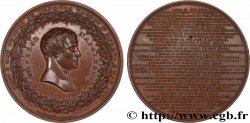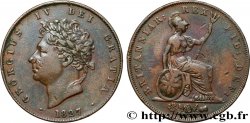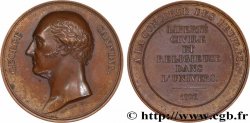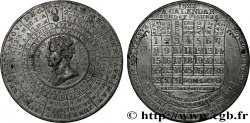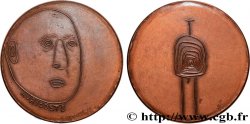fme_1009620 - GRAN BRETAGNA - GIORGIO IV Médaille, Vase de bronze de Thomason
60.00 €
Quantità
Aggiungi al carrello

Tipo : Médaille, Vase de bronze de Thomason
Data: 1829
Metallo : stagno
Diametro : 52 mm
Asse di coniazione : 12 h.
Peso : 46,80 g.
Orlo : lisse
Marchio : sans poinçon
Commenti sullo stato di conservazione:
Patine hétérogène avec des traces d’usure, coups et rayures. Tâches d’oxydation. Restes de brillant de frappe
N° nelle opere di riferimento :
BHM1176
Diritto
Titolatura diritto : 21 FEET IN CIRCUMFERENCE AND 5 FEET 101N IN HEIGHT // BRONZED IN DEUOTOXIDE IN 1820 / ACQUIRED A PEROXIDE / 1829.
Descrittivo diritto : Vue sur la vase de bronze de face.
Rovescio
Titolatura rovescio : . THOMASONS METALLIC BRONZE VASE - PRECISELY THE SIZE OF THE MARBLE ONE AT WARWICK CASTLE // OCCUPIED 6 YEARS TO / MODEL CAST AND / SCLUPTURE .
Descrittivo rovescio : Vue sur la vase de bronze en plongé en bas.
Commento
Médaille en métal blanc du vase Thomason. La copie du vase Warwick était la plus grande production de Sir Edward Thomason (1769-1849), qui était l'un des plus grands artisans de Birmingham. Le vase en marbre original a été exhumé en Italie vers 1770 et date d'entre 118 et 133 après J.-C. Il mesurait 170 cm de haut et 150 cm de diamètre et pesait environ 3,5 tonnes. En 1788, le comte de Warwick l'installa dans une serre spéciale au château de Warwick où il resta jusqu'en 1979, date à laquelle il fut acheté par les musées et galeries d'art de Glasgow. Achevée en 1820, la copie fut coulée en fer avec des poignées en laiton et une finition décorative, et Thomason émit une médaille de bronze pour commémorer l'événement. Après d'autres travaux sur la finition décorative du vase, Thomason émit deux autres médailles en bronze et en métal blan.
White metal medal of the Thomason Vase. The copy of the Warwick Vase was the largest production of Sir Edward Thomason (1769-1849), who was one of Birmingham's greatest craftsmen. The original marble vase was excavated in Italy around 1770 and dates to between 118 and 133 AD. It measured 170 cm (67 in) high and 150 cm (59 in) in diameter and weighed approximately 3.5 tons. In 1788, the Earl of Warwick installed it in a special greenhouse at Warwick Castle, where it remained until 1979, when it was purchased by Glasgow Museums and Art Galleries. Completed in 1820, the copy was cast in iron with brass handles and a decorative finish, and Thomason issued a bronze medal to commemorate the event. After further work on the decorative finish of the vase, Thomason issued two further medals in bronze and white metal
White metal medal of the Thomason Vase. The copy of the Warwick Vase was the largest production of Sir Edward Thomason (1769-1849), who was one of Birmingham's greatest craftsmen. The original marble vase was excavated in Italy around 1770 and dates to between 118 and 133 AD. It measured 170 cm (67 in) high and 150 cm (59 in) in diameter and weighed approximately 3.5 tons. In 1788, the Earl of Warwick installed it in a special greenhouse at Warwick Castle, where it remained until 1979, when it was purchased by Glasgow Museums and Art Galleries. Completed in 1820, the copy was cast in iron with brass handles and a decorative finish, and Thomason issued a bronze medal to commemorate the event. After further work on the decorative finish of the vase, Thomason issued two further medals in bronze and white metal








 Segnalare un errore
Segnalare un errore Stampate la pagina
Stampate la pagina Condividi mia selezione
Condividi mia selezione Fai una domanda
Fai una domanda Consegnare / vendere
Consegnare / vendere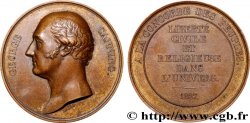
 Descrittivo
Descrittivo